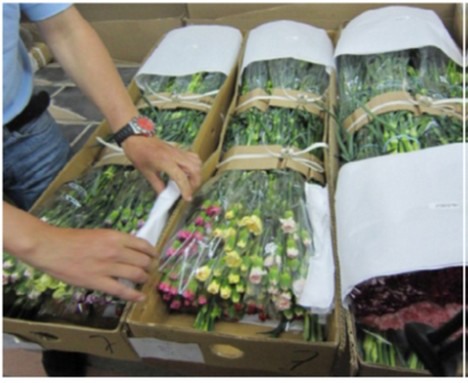In March, the Rural Culture Association of Japan published a book called Agricultural Technology System, Flower Edition. Nobu Kaishita of Chrysal Japan Limited wrote an article in the book titled Global floral trends and the strategy of Japan. This article focuses on the global floral trends, both internationally and in Japan specifically. It was published in Japanese and has recently been translated into English by him. The complete translation can be found here, and below is a summary.
The import value of cut flowers in Japan has increased more than 1.5 times in the last ten years, reaching JPY44.9 billion in 2019 on a Japan arrival basis to reach a market share of 18%. However, looking at the number of cut flowers, the share of imported cut flowers will be even higher, 28%, compared to about 4.8 billion stems, which is the sum of 3.48 billion stems of domestic cut flowers and 1.34 billion stems of imported cut flowers in 2019.

In the past, especially Thailand and the Netherlands accounted for more than 50% of Japan's flower imports. But in recent years, imports have shifted mostly to other countries such as Malaysia for spray chrysanthemum, Colombia for carnation, Kenya for roses, and Japan's neighboring countries like India and China. Cut flower imports are currently increasing.
Role of cut flower import
There are several reasons why flowers are imported into Japan. Firstly, to supply new varieties and rare flowers. Secondly, to supply the market during the off-season of domestic production and high demand period, and finally, the market requires a stable supply of flowers of a certain quality at a relatively low price year-round supply.
There are three major categories, but the flower import for Buddhism bouquets and household use is increasing from the highlands on the equator at mass retailers as the stably supply of every week. As a result, 70% of imports were previously concentrated in the five months from August to December, but they have been dispersed in each month. In 2019, the import shares of spray chrysanthemum, carnation, and rose were 52%, 64%, and 21%, respectively.
The import status by variety in 2019 is 341 million stems of chrysanthemum, mainly by spray chrysanthemum as 199 million stems from Malaysia (4% by ship) and 97 million stems from Vietnam (84% by ship), and 53 million stems of mainly disbud chrysanthemum from China (99% by ship). Carnations are 361 million stems, 249 million stems from Colombia (5% by ship), 75 million stems from China (77% by ship), and 29 million stems from Ecuador, mainly by refrigerated sea container taking about one month from Ecuador. (72% by ship).
There are 53 million stems of roses imported, 22 million stems from Kenya, and 11 million stems from Ethiopia, which are the two major exporters to Japan, and except for 2.6 million stems from South Korea by sea containers, all are shipped by air.










